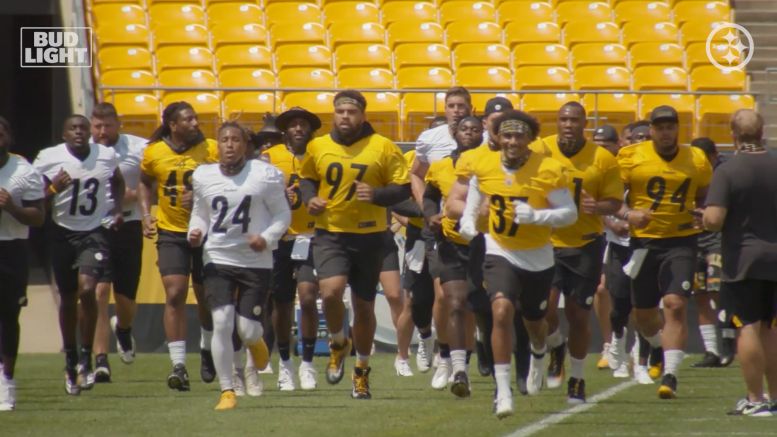Training camp is finally here, even genuine practices. This is the first time all year that we, and the Pittsburgh Steelers, have had the opportunity to take the field in any capacity, which is an all-important step in the process of evaluating your offseason decisions and beginning to put the puzzle together that will shape the upcoming season.
The Steelers are coming off of an 8-8 season, but while they will default to clichés about how you are what your record says you are, they know they have the potential to be much better. Still, they enter training camp with some questions to answer.
They are no different than any team in the NFL in that regard, in any year. Nobody comes to practice as a finished product. So during this series, we are going to highlight some of the most significant storylines that figure to play out over the course of training camp.
Headline: Preparing without the preseason
Unique to this training camp experience is the very fact that, for the first time in I don’t know how long—ever?—teams preparing for the 2020 season will have no preseason exhibitions in which to partake, which serve both as key preparatory and evaluative tools in the team-building process.
This not only makes it more difficult to assemble the best and most talented 53-man roster possible, but also deprives starters and role players of getting those live competitive reps that serve as a valuable warm-up for the real in-game experience just to come.
When rookies come in, teams often talk about speeds. Practice happens at one speed. Preseason games happen at another. Then the regular season is a whole other level still, and if you’re lucky enough to reach the postseason, the intensity is ratcheted up to its highest level.
This year, not just rookies but everybody will be expected to make that transition from practice speed to regular season speed like a light switch. That will not be seamless, by any means, but the teams who are able to handle that shift the smoothest will be in the best position to get off to a good start, which in some cases could prove to be the difference in a division race or something like that.
For the Steelers, while they have long been one of the few teams that do a lot of real hitting during training camp, they have been working more and more on mechanical things, such as live special teams drills, which they previously haven’t done. They are also paying special attention to transitional ball, which is a key growth process previously allowed by preseason play.
Still, there’s only so much that you can do from the practice field to transition into the stadium without having done in-stadium work against genuine opponents in a competitive environment. At the end of the day, all 32 teams are going to be disadvantaged. You just have to try to manage the handicap better than the rest.








